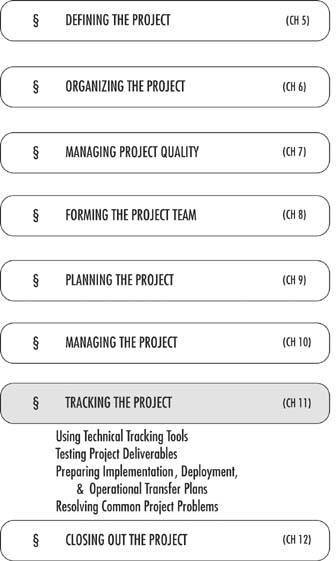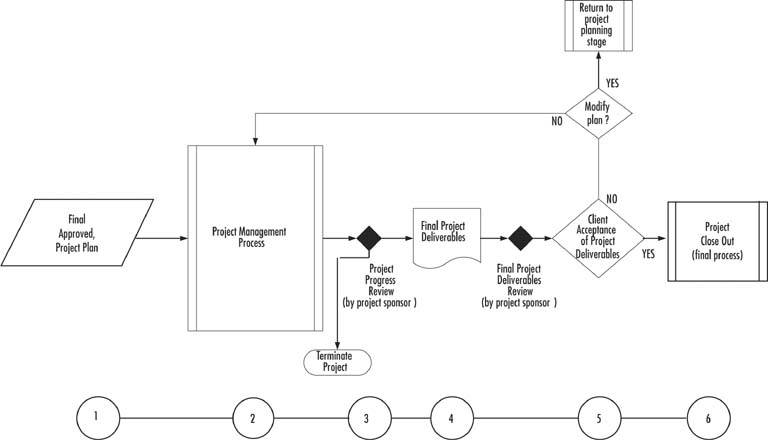Section 11.1. Introduction
11.1. IntroductionIn Chapter 10, we discussed how to manage your project once work gets underway. Monitoring and measuring project performance can be a challenge, especially if you use percent complete or other less technical measurements. We've all been involved in at least one project where everything seemed to be rolling along in the "green" zone and a week or two before project completion, all hell broke loose and the project suddenly was in the "red" zone. How do these things happen? Depending on whether you're in an optimistic or pessimistic mood, your assessment of the percent complete can change in part because percent complete is a judgement call. In this chapter, we're going to review a few more technical approaches to measuring project progress. Even if you don't plan on using them, you might find it useful to read through the material. You might be surprised to find that these are measurements you understand and could easily implement. If you choose not to read through the more technical measurements, skip to the middle of the chapter and pick up reading where we discuss common project problems and their solutions. Understanding and resolving project problems is part of keeping your project on track so you'll find helpful information in this section. It's not meant to be the definitive list of potential project problemsevery project is unique (by its very definition) and every project will encounter different problems. However, there are commonly occurring themes and these tend to crop up frequently. Being prepared for the common problems can be seen as part of your risk management strategy. Plan for the common problems and respond to the uncommon problems. You'll sleep better at night having some of these strategies in your back pocket. As in previous chapters, let's look at where we are in our IT project management process. Figure 11.1 shows tracking as the last step before project close-out, discussed in Chapter 12. Figure 11-1. IT Project Management Process Overview Before we head into the chapter material, let's define new terms you'll encounter in this chapter.
Tracking the project to maintain control, taking corrective action based on tracking data, and resolving common project problems are all part of managing the IT project, but are discussed separately in this chapter in order to clearly focus on these aspects of IT project management. For some IT projects, using a simple percent complete or variance reporting will be sufficient; for other IT projects, more detailed tracking and analysis is required and we'll cover these techniques in this chapter. Figure 11.2 shows the inputs, actions, checkpoints, and outputs from this stage of the project lifecycle. It is the same diagram used in Chapter 10 since the tracking and control steps occur during the management phase of the project. Figure 11-2. Inputs, Actions, and Outputs for Project Management Step The discrete steps are delineated in Chapter 10, but it is important to note the project management process includes implementing the project, monitoring and tracking the results, and taking appropriate corrective action in an iterative manner until all project work has been successfully completed. In this chapter, we'll look at steps involved in tracking and controlling the project as well as the steps for preparing for final project deliverables and close-out. |
EAN: 2147483647
Pages: 166